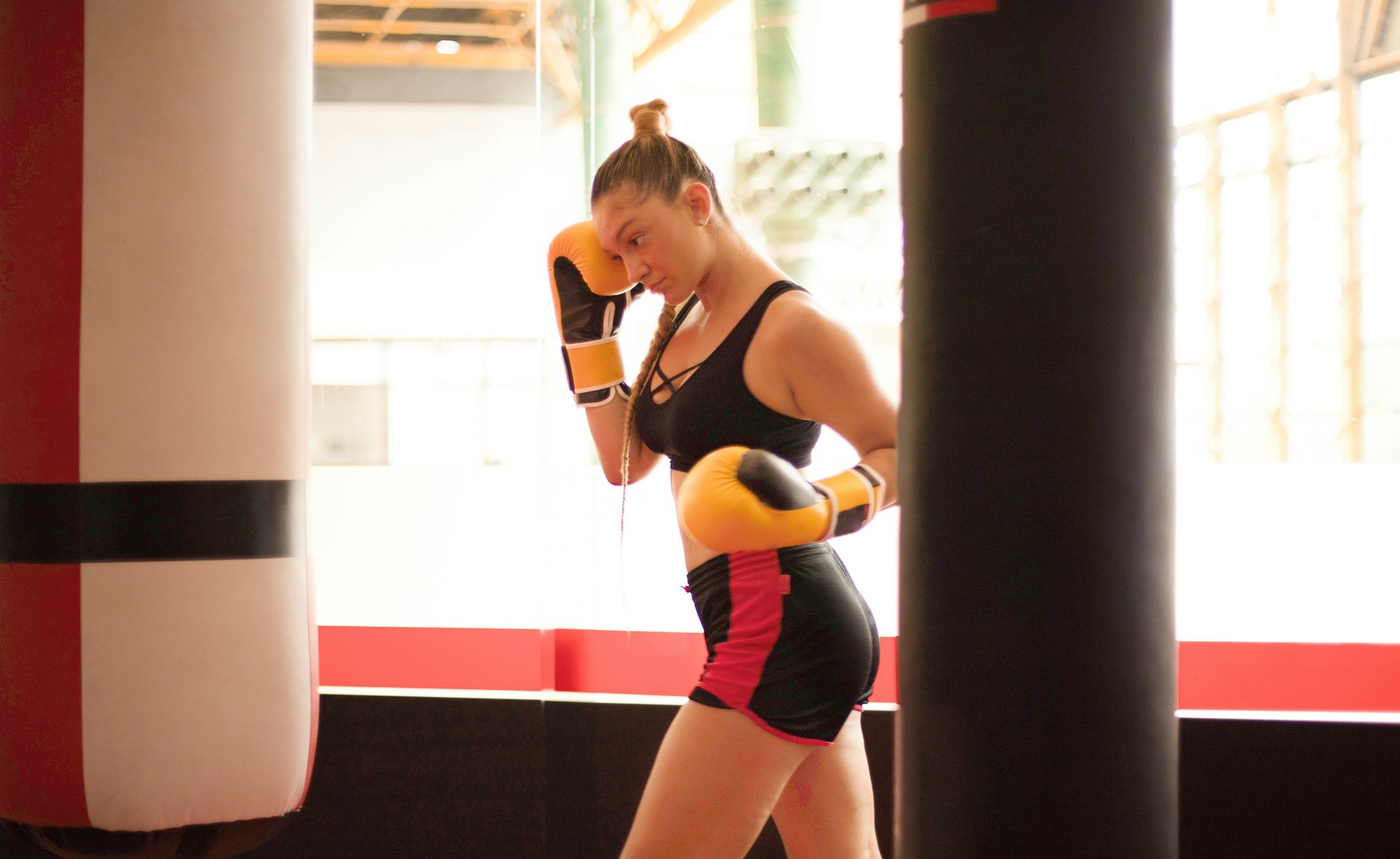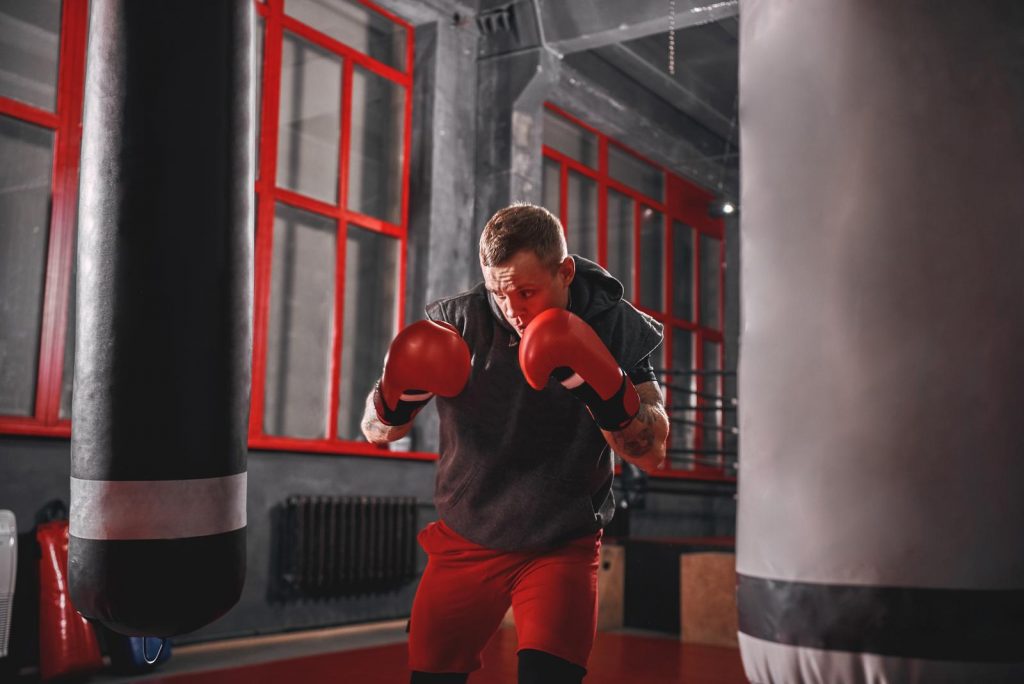
How to Punch a Punching Bag Without Hurting Yourself
Punching a bag feels powerful. It’s a stress reliever, a cardio booster, and a strength builder. However, improper techniques can lead to injuries, ruining the experience. So, for many beginners, the question is; how to punch a punching bag the correct way?
Punching bags training combines intensity and fun. It improves cardiovascular health, builds muscle, and releases pent-up tension. A few punches can leave you feeling energized and in control.
This blog will guide you on how to punch a bag safely. You’ll learn how to choose the right equipment and gear up to avoid injuries. Let’s get started.
Selecting the Right Punching Bag
Choosing the right heavy boxing bag is crucial for safe and effective heavy bag training. Using poorly designed or ill-fitting gear can lead to injuries or reduce your training’s efficiency.
- Weight and Size: Pick a bag that matches your fitness level and goals. Beginners should go for lighter bags that are easier to control when practicing their punches in the boxing gym in front of opponents. Heavier bags suit advanced users looking for more resistance and power training combinations.
- Material: Opt for tough materials like leather or high-quality synthetics. These materials are durable and provide a better punching experience.
Essential Protective Gear
Equipping yourself with the right gear ensures safety and comfort during your punching sessions:
- Hand Wraps: These are essential for protecting your wrists and knuckles. Boxing straps and wraps add support, keep your hands aligned, and minimize the risk of injuries from repetitive impacts.
- Boxing Gloves: Gym gloves are designed to absorb the impact of punches and shield your left and right hands. Weight gloves This will help distribute the force evenly when you throw punches, reducing strain on your knuckles and wrists.
Preparing for Your Basic Boxing Workout
Preparation is key to a safe and effective boxing or heavy punching bag session. Starting right reduces the risk of injuries and enhances performance. Here’s how to get ready for your next fight in the boxing gym:
Warm-Up Exercises
A proper warm-up prepares your body for action. It boosts blood flow and loosens tight muscles, which is essential for a boxer preparing for a fight.
- Dynamic Stretching: Stretch arms, shoulders, and wrists to increase flexibility. Use a boxing speed bag for different boxing punches and building speed. Rotate your neck and roll your shoulders to relieve tension.
- Cardio Activities: Get your heart pumping with light jogging, high knees, an Everlast boxing bag workout, or a quick set of jumping jacks.
Proper Attire
What you wear affects your comfort and safety during the workout.
- Clothing: Choose breathable, moisture-wicking fabrics. Avoid anything too loose that could snag or restrict movement.
- Footwear: Supportive shoes with good grip ensure stability and enhanced footwork. Slip-resistant soles keep you grounded during rapid movements.
Techniques for How to Punch a Punching Bag Properly
Proper form is essential. It maximizes impact while protecting your body.

Start with these fundamental techniques:
Fundamental Punches
Each punch has a specific purpose. Practice them with precision.
- Throwing a jab: A quick, straight punch using your lead hand. Keep it light and sharp to set up other punches.
- Cross: A strong, straight punch with your rear hand. Engage your shoulders and core for maximum power.
- Right or Left hook: A curved punch aimed at the side of the opponent’s head or body. Keep your elbow at a 90-degree angle for control.
- Uppercut: An upward punch targeting the chin. Use your legs and core to drive the force upward.
Body Mechanics
Your technique depends on proper posture and movement. Master these basics:
- Boxing stance: Stand with feet shoulder-width apart. Keep one foot slightly ahead for balance and mobility.
- Hip Rotation: Power comes from your hips. Rotate them as you punch to generate force.
- Hand Positioning: Always keep your hands up near your face. This protects your head and ensures proper alignment for every proper punch.
Injury Prevention Strategies
Preventing injuries is as important as perfecting your punches. A few simple steps can keep you safe and help you enjoy your training.
Common Injuries and How to Avoid Them
- Wrist Sprains: Always punch with straight wrists. This keeps the force aligned when you throw uppercuts and avoids unnecessary strain.
- Knuckle Abrasions: Knuckle abrasions can occur if you don’t properly protect your hands while throwing punches in the ring. Use hand wraps and gloves to protect your skin. These add a layer of cushioning and reduce friction against the bag.
- Shoulder Strain: Don’t overreach or overextend your punches. Controlled movements protect your shoulders and improve accuracy.
Listening to Your Body
Knowing your limits is key to injury prevention.
- Recognizing Pain vs. Discomfort: Pain signals a problem. Stop immediately and assess the issue. Discomfort, on the other hand, is part of progress—don’t push too far.
- Rest and Recovery: Schedule rest days to let your muscles heal. Recovery is where strength and endurance build.
Post-Workout Care
How you care for your body after a session matters. Recovery ensures you’re ready for your next punch workout.
Cool-Down Routine
Always wind down with care to prevent stiffness and soreness.
- Static Stretching: Stretch the muscles you used during the workout. Focus on arms, shoulders, and back for optimal relief.
- Hydration: Drink plenty of water to replace fluids lost through sweat.
Hand and Wrist Care
Your hands and wrists take the brunt of the workout. Treat them with care.
- Ice Application: Apply ice to reduce swelling or soreness. Ten to fifteen minutes is enough to keep inflammation in check.
- Massage: Gently massage your hands and wrists. This promotes blood flow and relaxes tight muscles.
Additional Tips for Safe Training
Safe training doesn’t stop with warm-ups and technique. Following these tips ensures long-term progress without setbacks.
- Gradual Intensity Increase: Ease into your routine. Start with shorter, lighter sessions to build endurance and confidence. Increase intensity only when you feel ready.
- Technique Over Power: Focus on your form. Proper technique not only boosts performance but also minimizes injury risks.
- Coaching: A trainer can help you master the basics. They provide personalized feedback and ensure you’re progressing correctly.
Conclusion
Punching a bag can be exhilarating, but safety matters. Proper equipment, the right technique, and injury prevention measures are key to enjoying the full benefits of this workout. Take the time to warm up, use quality gear, and practice good form.
Explore a wide range of punching bags and gym equipment at Dynamo Fitness Equipment. Visit our mega showrooms or shop online to find everything you need for your training.
Gym Equipment Melbourne Stores
Gym Equipment Sydney Store
Gym Equipment Adelaide Store
Gym Equipment Perth Stores
Our knowledgeable team is ready to assist you. Contact us today!
